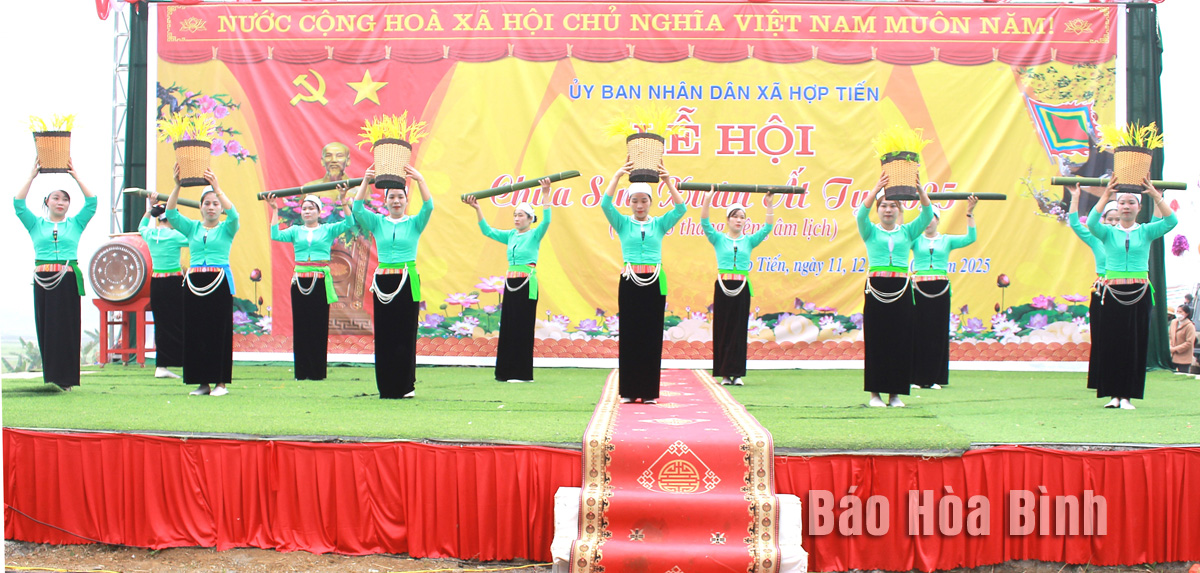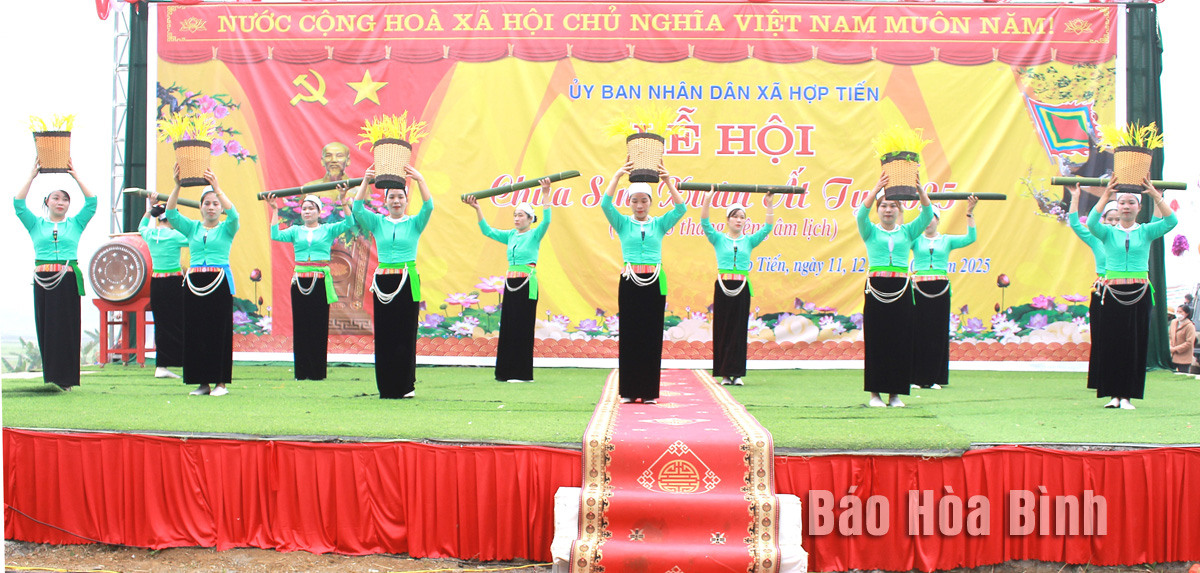
On February 12th (i.e. Lunar January 15), the People's Committee of Hop Tien commune, Kim Boi district organized the Festival of Sim Pagoda Festival in At Ty Spring, 2025. The festival welcomed many people and tourists to visit the pagoda and enjoy the scenery.
The palanquin procession to Sim Pagoda.
The special art program at the Festival of Sim Pagoda Festival in At Ty Spring, 2025.
This is an annual festival with 2 parts, the ceremony and the festival. In which, the ceremony is solemnly organized with full rituals and ceremonies, including the palanquin procession from Ong Tu's house to Sim Pagoda, to Bai Nac stream, then back to Sim Pagoda; offering incense, performing ceremonies at U communal house, praying for the gods to bless a year of peace, prosperity, good crops, and happiness for every family.
During the festival, the local people and tourists enjoyed the art programs; the cultural exchanges between Vinh Tien, Dong Bac, Vinh Dong communes, Kim Boi district; Banh Chung wrapping contest; the competitions in the ethnic sports and men's volleyball.
The festival not only meets the cultural and spiritual needs of the people, enhances the preservation and promotion of cultural identity, but it is also an opportunity to introduce and promote the tourism potential and strengths of Hop Tien commune in particular and Kim Boi district in general.
With an increasingly vibrant and widespread emulation movement aimed at building cultured residential areas and cultured families, Yen Thuy District has been making steady progress toward improving both the material and spiritual well-being of its people, while fostering a civilized, prosperous, beautiful, and progressive community.
Once lacking recreational spaces and community facilities, Residential Group 2 in Quynh Lam Ward (Hoa Binh City) has recently received attention for the construction of a new, spacious, and fully equipped cultural house. The project followed the model of state support combined with public contributions in both labor and funding.
The "All people unite to build cultural life" movement, which has been effectively integrated with Kim Boi district’s socio-economic development goals, is fostering a lively spirit of emulation across local residential areas, hamlets, villages, public agencies, and enterprises. In addition, through the initiative, traditional cultural values are being preserved and promoted, while community solidarity and mutual support in poverty reduction and economic development are being strengthened.
A working delegation of the Hoa Binh provincial People’s Committee led by its Permanent Vice Chairman Nguyen Van Toan on June 11 inspected the progress of a project to build the Mo Muong Cultural Heritage Conservation Space linked to tourism services in Hop Phong commune, Cao Phong district.
Born and growing in the heroic land of Muong Dong, Dinh Thi Kieu Dung, a resident in Bo town of Kim Boi district, in her childhood was nurtured by the sweet lullabies of her grandmother and mother. These melodies deeply imprinted on her soul, becoming an inseparable part of her love for her ethnic group's culture. For over 20 years, this love for her hometown has driven Dung to research, collect, and pass down the cultural values of the Muong people to future generations.
In the final days of May, the Ethnic Art Troupe of Hoa Binh Province organized performances to serve the people in remote, mountainous, and particularly disadvantaged areas within the province. These were not just ordinary artistic shows, but they were the meaningful journeys aimed at spreading cultural values, enhancing the spiritual life of the people and contributing to the preservation of ethnic minority cultural identities.



